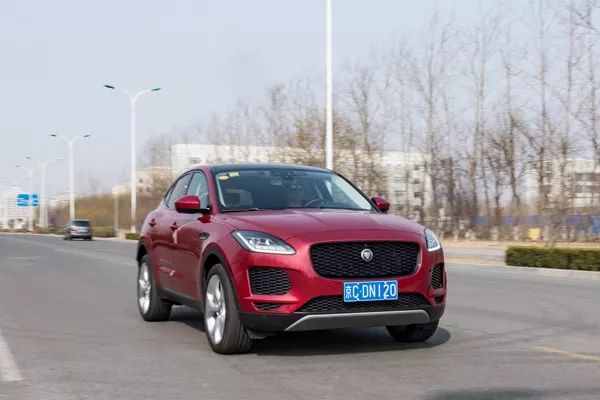“The road to Shu is as difficult as going to the blue sky!”
As soon as this sentence comes out, I’m afraid it will arouse
Many people painfully recited their memories
“Difficult Road to Shu”
It can be called the representative work of Li Bai’s poems “The Immortal”
Later generations have pitifully little knowledge of the ancient Shu Road
It is from this well-known genius work
▼Mingyue Gorge plank road, photography/Tang Biao

In fact, the historical term Shu Road
Far from a “difficult” word can sum up
as an ancient Chinese
The earliest construction time and the longest existence
Spanning the most dynasties and using it for the longest time
The route is difficult and complicated, and there have been dozens of wars
ancient traffic arteries
it is compatible with
The Silk Road, the Great Wall, and the Grand Canal
Known by contemporary cultural heritage researchers as
China’s four major linear cultural heritages
some even say
A thousand-year-old road, half of Chinese history
What is Shu Road?
What is Shu Road? There is a popular saying:
In a broad sense , the Shu Road refers to all the roads leading to Shu ; in a narrow sense , it refers to the Sichuan-Shanxi Road from Chang’an to Sichuan , crossing the Qinling Mountains from the Guanzhong Plain to the Hanzhong Basin, and then crossing the Daba Mountain from the Hanzhong Basin to the Chengdu Plain.
▼The geographical relationship between Guanzhong, Hanzhong, and Sichuan, produced by “China Self-driving Geography”
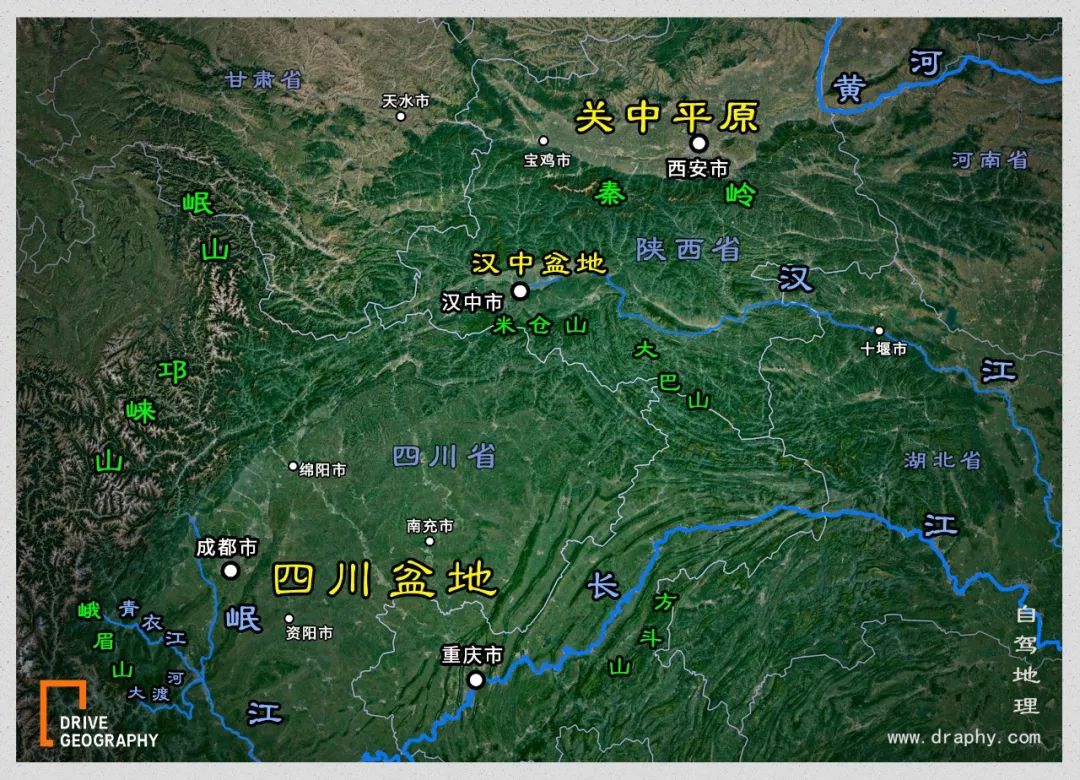
Some scholars also believe that, to be more precise, the “Shu Road” that has reached a social consensus in the cultural history for a long time is not a literal “Road to Shu “ or “Roads leading to Shu in all directions” , but specifically refers to crossing The Sichuan-Shanxi Road in the Bashan Mountains of the Qinling Mountains is also known as the “Qinshu Ancient Road” .
But in any case, there is not only one Qinshu ancient road, it is a multi-line, north-south road system network from Guanzhong-Hanzhong-Shuzhong .
▼7 main routes of Qinshu ancient road, four in the north and three in the south, produced by “China Self-driving Geography”
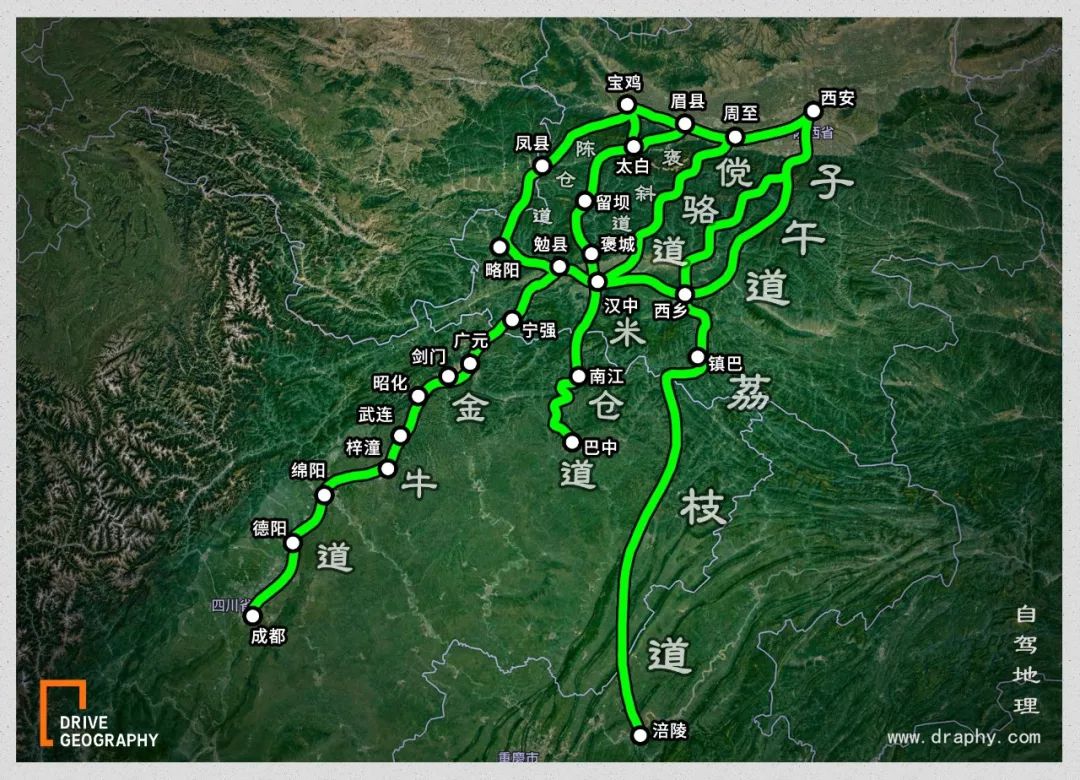
Each road has its own name, and the geographical situation, dangerous roads, and development sequences of the areas it passes through are not the same.
For thousands of years, Shu Road has basically formed and followed the pattern of “four north and three south”: divided by Hanzhong , there are old road (Chencang Road) , Baoxie Road, Tangluo Road and Ziwu Road in the north; Jinniu Road, Mi Cang Dao and Lychee Dao .
▼In mountainous and hilly areas, the ancient traffic lines were generally opened and extended along the direction of the river. The Rugu Road and Jinniu Road are connected by the Jialing River Valley. The picture shows the Jialing River, photo/driver

They are like 7 thick arterial vessels , meandering through the Qinba Mountains and connecting with other branch lines. Difficult, difficult to go to the blue sky!
▼Hanzhong Shimen Plank Road, photography/Shaanchuan

“One” thousand-year-old road, half of Chinese history
In fact, “The Difficult Road to Shu” is not unique to Li Bai. This is an ancient Yuefu title, which belongs to the name of the tune in “Xianghe Geci·Se Tiaoqu” . Many poets have written poems for the difficult and magnificent Shu Road.
No one knows exactly when the word “Shu Dao” first appeared (at least in the Three Kingdoms era when Wei, Shu and Wu coexisted) , only that it was first created by the ancient ancestors out of the need for communication. , know how to “make the way from the valley” , and gradually “walk from the narrow to the wide” , forming a natural .
▼Mingyue Gorge plank road, photography/li364789

So when did the Shu Road start to emerge?
Although there are historical records, as early as when King Wu of Zhou defeated Zhou, “Shu also followed suit ” . This period was the earliest period when the Shu road was further developed (it was still in the primitive valley road stage before) . Let’s call it: the rising period !
Qin and Han: The Rise of the Shu Road
One day, the feuds between Ba and Shu came to blows. Qin Huiwang wanted to take the opportunity to get his hands on the land of Shu, which was fertile and full of food .
Soon, Zhang Yi and Sima Cuo launched a wonderful debate: the former advocated destroying Korea, taking the heart of the Central Plains, and “taking the emperor to command the princes” to achieve the king’s career; If you are poor, after taking the land of Shu, the country will be expanded, and you can use its wealth to enrich the people and support the army, and you can even win the good reputation of “stopping violence and chaos”, why not do it?
In the end, Sima .
It was this decision that improved the roads of Shu. Before attacking Shu with troops, Qin once carried out a large-scale renovation of the Jinniu Road. The legend of “stone cow dung gold, five Dings open the road” is a reflection of this history. .

In 316 BC, Sima Cuo and others led their troops out of Ziwu Road and into Jinniu Road to destroy Shu , and then destroyed Ju (jū, now Hanzhong) and Ba , and seized the land of Bashu.
This is a turning point , taking the land of Bashu to manage Yunnan and Guizhou, attacking Chu, and becoming a rear base for hegemony with Eastern countries.
▼Post out this picture again, made by “China Self-Driving Geography”
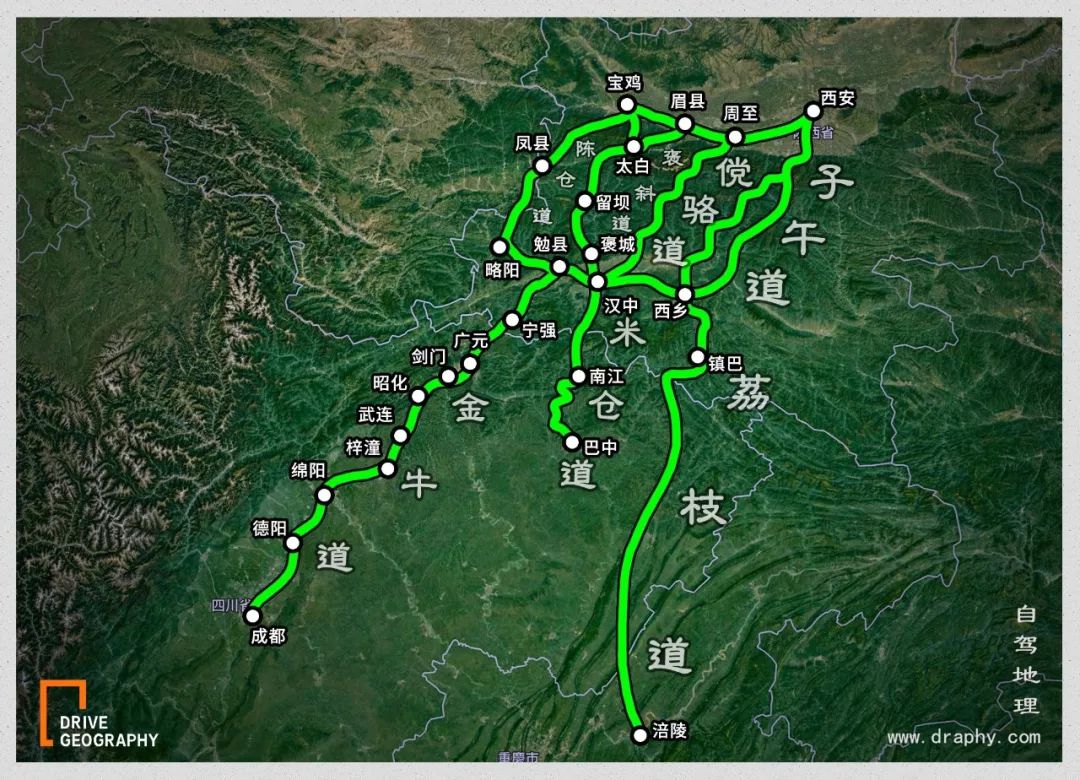
So Qin spared no effort to overhaul the plank road “passing through Shuhan” . More than 70 years later (at the end of King Zhaoxiang), it was already “the plank road is thousands of miles away, and everything is connected”. When Qin completed the great cause of unification and overhauled the road , Shu Dao is an important part of Chi Dao Network.
▼Qin destroyed the six kingdoms, produced by “China Self-driving Geography”

What we often say today, “Building plank roads in the open, and crossing Chencang secretly” , refers to the Chencang Road .
This comes from the fact that Liu Bang adopted Han Xin Xiang Yu , the overlord of Western Chu , to build plank roads (which were once burned by Liu Bang, and to show the powerful Xiang Yu that he had no intention of entering the Guanzhong to make trouble) , so as to attract the attention of the enemy and secretly make the army leave The story of Chen Cangdao sending troops, successfully conquering Sanqin in the north and retaking Guanzhong.
Wei, Jin, Southern and Northern Dynasties: War Situation
That’s right , the shu road , which connects the three major political ( guanzhong ) , military ( hanzhong ) , and economic ( shuzhong ) towns , has been covered with wars since its inception period.
If it is said that Liu Bang burned the plank road to hide his strength and bide his time, it was the first time that the Shu Road was destroyed due to military and political reasons, then during the turbulent Wei , Southern and Northern Dynasties , the Shu Road was even more tragic, with continuous wars and serious damage to all lines .
▼Praise ramp

In order to meet the needs of the war, during this period, the lines of the Shu Road entered a cycle of “frequently being destroyed and then repaired”, among which the Baoxie Road was the most frequently shot.
Now on the cliff stone carving near the stone gate of Baoxie Road, there are still “Dangkou General Futing Hou Qiaoguo Li Baozi Xiaozhang on December 10th in the fourth year of Jingyuan, and two thousand Chinese soldiers and stone carpenters first passed this pavilion road.” .” The testimony of road construction.
▼Eastern Han Dynasty Cliff Stone Carving “Opening the Baoxie Road Carving Stone”
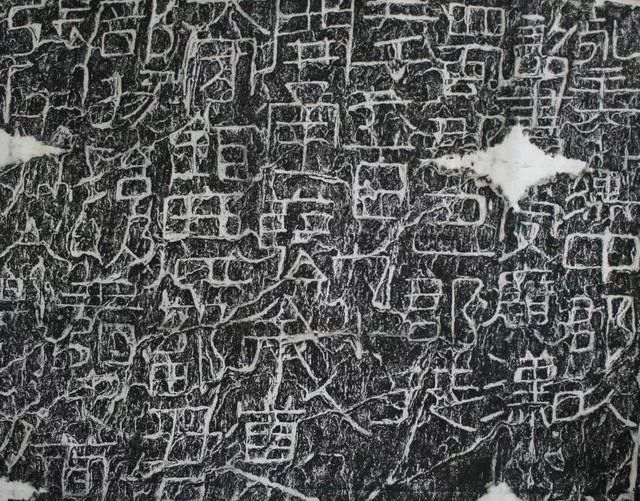
Sui and Tang Dynasties: Reaching the Peak
Entering the era of Sui and Tang empires , Shu Road ushered in a period of extreme prosperity.
During this period, due to the closer ties between the central government and various localities, as well as surrounding ethnic groups and countries, the transportation industry achieved unprecedented development .
The Gudao, Baoxie, Tangluo, and Ziwu roads in the northern section of the Shu Road were successively turned into official post avenues ; the Jinniu, Miicang, and Lizhi roads in the southern section were also set for postal services .
▼Prosperous Tang Dynasty Chang’an Ten Thousand Kingdoms Come to Korea
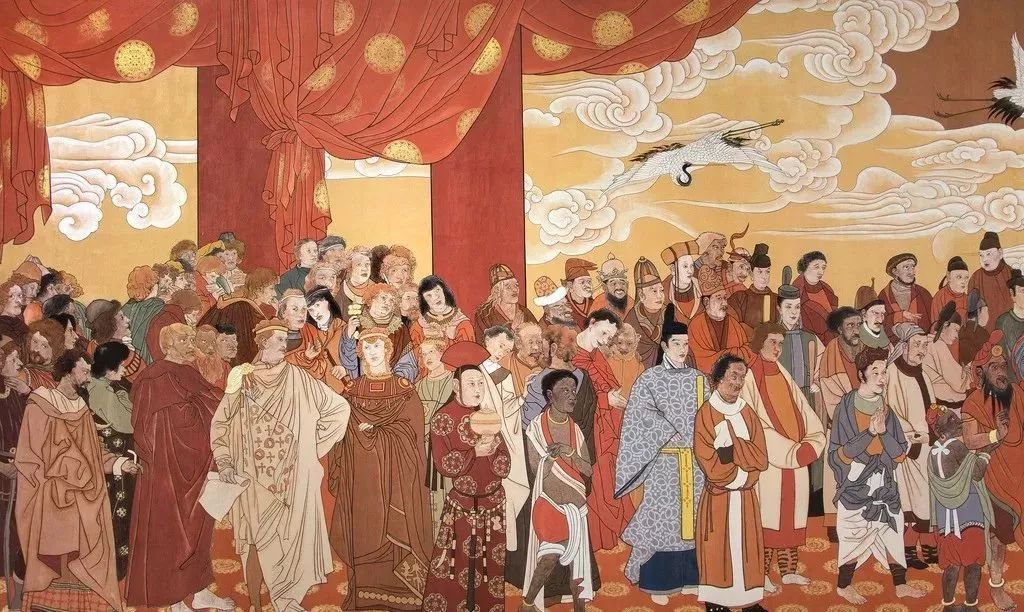
At that time, it was difficult to verify how many post stations there were on the Shu road. Liu Yuxi’s “Shannan West Road Newly Built Post Road Records” said: Baoxie Road “arrives from Sanguan Pass to Baocheng, and there are five out of ten second homes.” From Lizhou to Jianmen, there are seven out of ten.” This is not all.
All the Shu roads run through the Qinling Mountains and Bashan Mountains like shoulder poles, closely linking Chang’an and Chengdu, and then connecting the Central Plains and Southwest China, and connecting with the “Silk Road” from the north to the south, forming an open transportation network!
▼The Shu Road crosses the majestic Qinling Mountains, photo/Kang Haoming
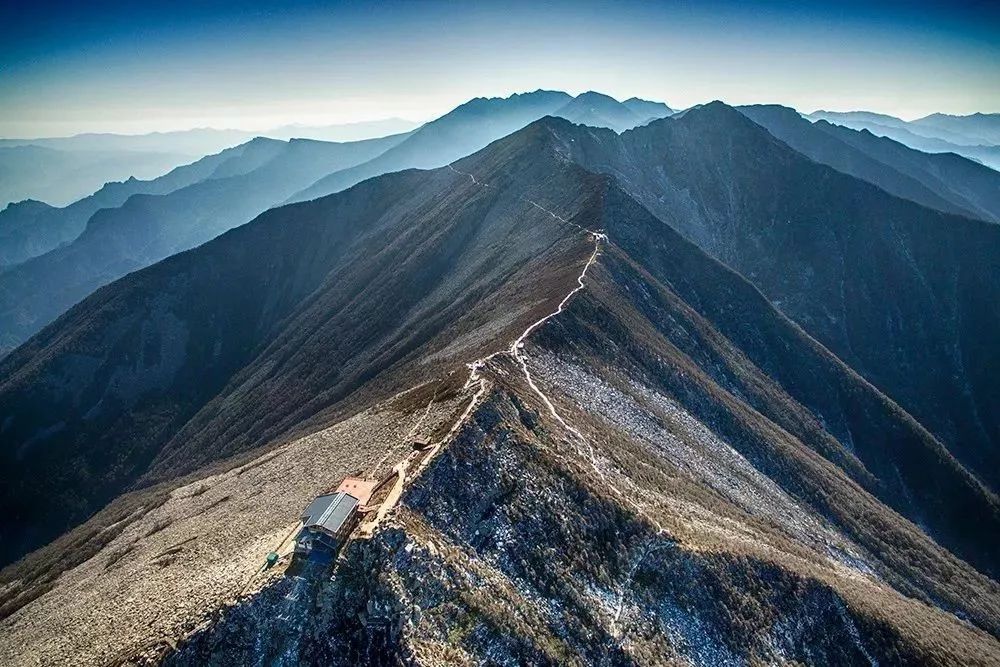
If we travel to that period, we will be surprised by the scene in front of us: on the post roads leading from Chang’an to Shannan (Shannan Road, east of the Jialing River Basin), Jiannan, Tubo, and Nanzhao, there are endless streams of vehicles and pedestrians. … In addition, the great poets of all periods have visited here and left many poems.
▼Bai Zongwei: “Shu Mountain Travel Map”
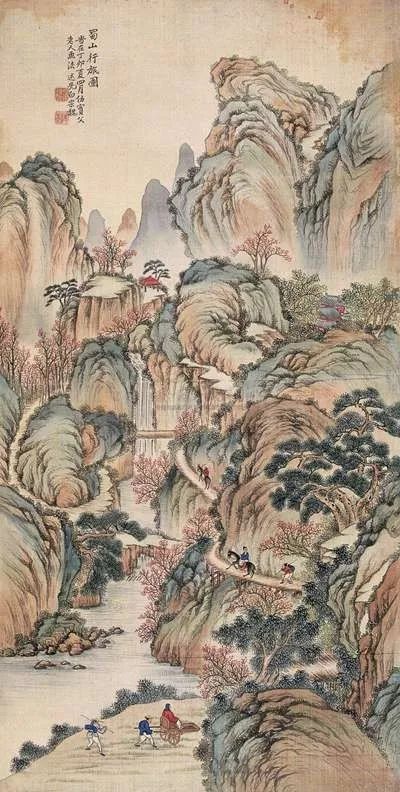
From the Five Dynasties to the Republic of China: Times of Change
From the Five Dynasties to the Republic of China , although the national capital moved eastward , the Shu Road, as an important , was still valued and continued to be repaired. Change .
It is worth mentioning that the tea , which had a great impact on the political economy of the Song Dynasty. .
▼Drawn by Louis de la Porte of France, the Shang Gang on the Ancient Tea Horse Road in Yunnan
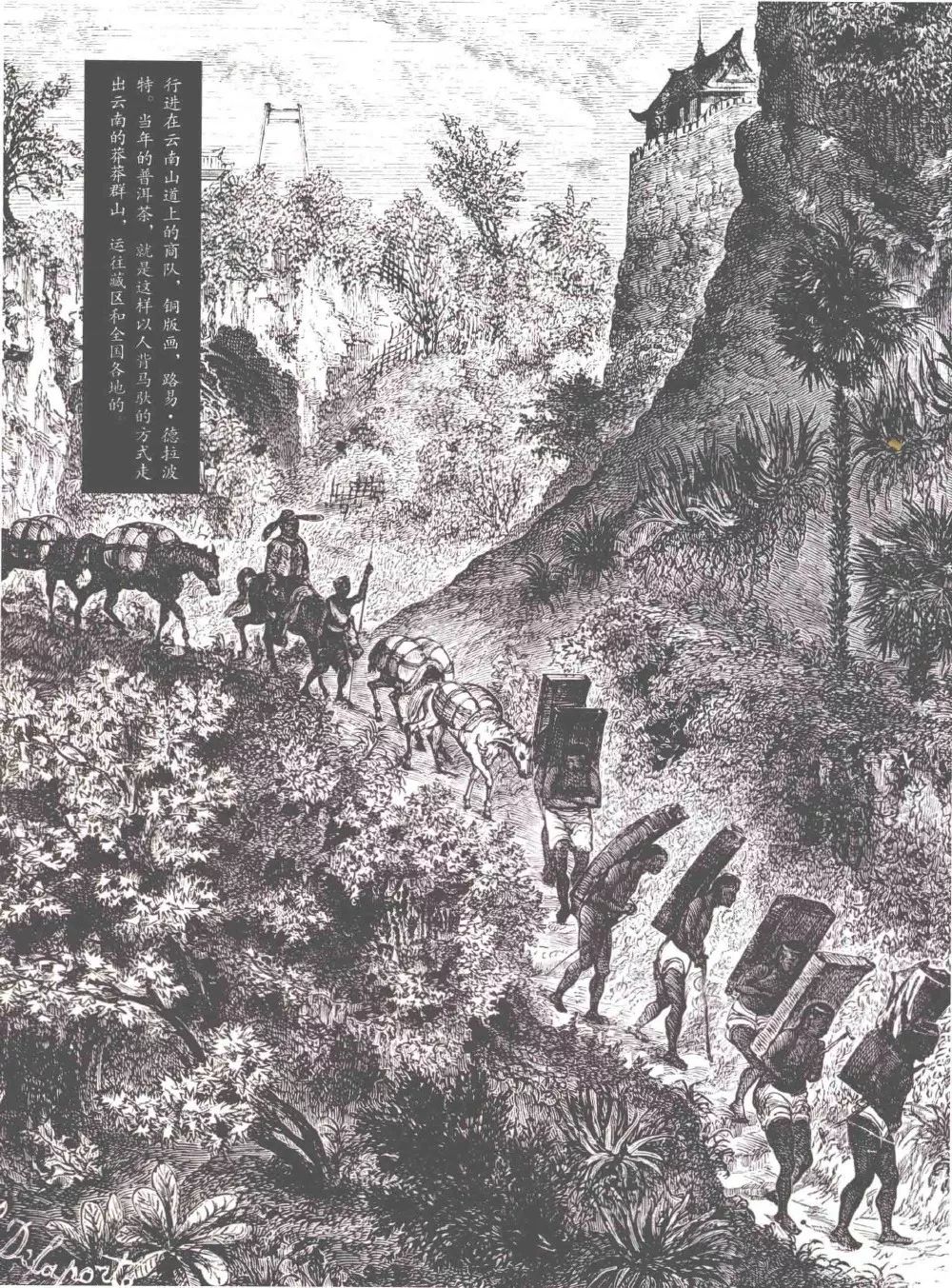
Since the Republic of China, with the introduction of modern western advanced means of transportation, trains, ships, and automobiles, the traffic on the Shu Road .
However, the ancient Shu Road did not disappear completely. The modern roads, railways and expressways connecting the two provinces of Sichuan and Shaanxi were all developed on the basis of the ancient Shu Road , and many routes were basically designed and constructed along its lines.
For example, the Sichuan-Shaanxi Highway (now the 108 National Highway Section) built during the Republic of China was based on the Baoxie Road (Yuan, Ming and Qing Lianyunzhan) and Jinniu Road in the Tang and Song Dynasties ; the Baocheng , the northern section The line is taken from the old road , and the southern section is taken from Jinniu Road .
▼Baocheng Railway: Starting from Baoji City, Shaanxi in the north, crossing the Qinling Mountains in the south to Chengdu, Sichuan, with a total length of 669km, China’s first electrified railway (the electrification of the entire line was completed in 1975), and also the first railway with arduous engineering in New China. A traffic artery connecting the Northwest and Southwest regions. From crossing the Qinling Mountains in a few months in ancient times to passing through Shaanxi and Sichuan on the Baocheng Railway in more than ten hours , the situation of “difficult road to Shu” has been changed to a certain extent.

The road of Shu has changed for thousands of years, and the world has been reincarnated for several years.
Today, when you walk through the highways and railways deep in the Qinling Mountains, you may occasionally see the remains of the ancient Qinshu road. Although the wooden structures have been eroded by the years, the rows of holes on the stone walls still freeze the vicissitudes of time and space. .
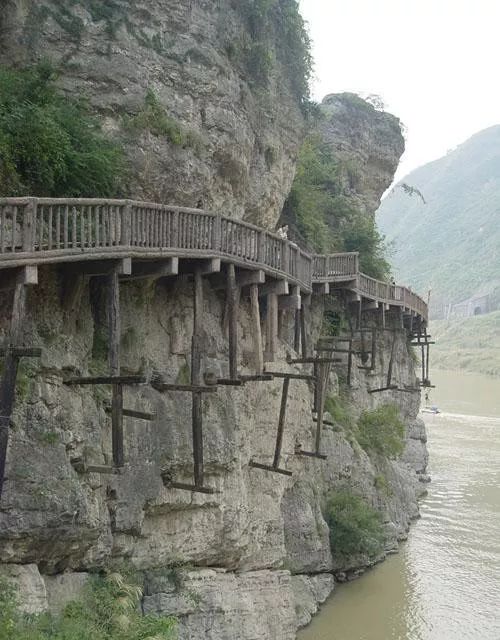

Initially, our understanding of the Shu Road
It may only come from Li Bai’s exaggerated description:
“You are 48,000 years old, and you will not live with Qin Sai.”
but history tells us
Although the road to Shu is difficult, it is not completely closed
because of it
China’s first two lands of abundance
(Guanzhong and Chengdu Plain)
even the Central Plains
Only then have fairly close contacts and contacts
and promote the integration of various cultures
▼Shimen plank road, photography / Big Worm 2012
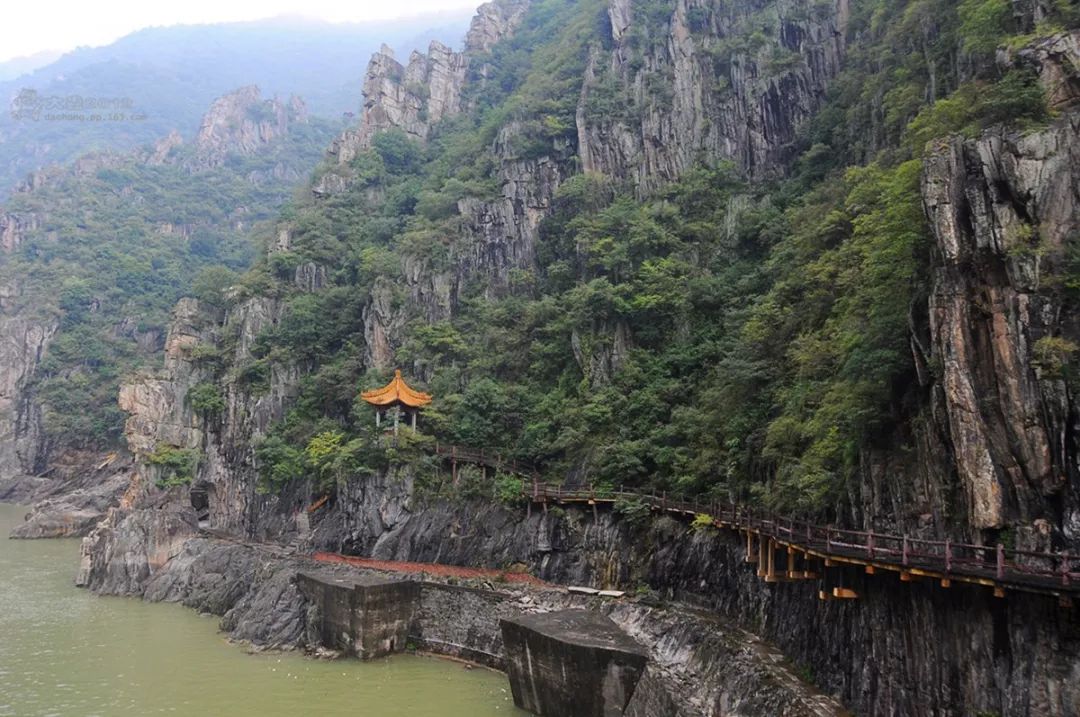
Therefore, the Qin Shu Ancient Road
Not only a political road, but also an economic road
It is a road of integration
References:
Li Zhiqin, Yan Shoucheng, Hu Ji, etc.: Talking about the Ancients of Shu Road
Peng Bangben: “Shu Road · Main Routes, Early Development and Historical Position Purpose”
Zhao Jing, Lu Wu: “A Brief Discussion on the Transformation of the Shu Road from Historical Terms to Cultural Heritage”
Wang Zijin: “Historical Cognition of Shu Road Cultural Route”
Fan Lina: “The Forming Factors of Shu Road Traffic Lines”
Li Jiuchang: “The Historical Context of the Rise and Fall of Shu Road Traffic”
Wang Zijin: “The Qin People’s Management of the Shu Road”
Zhang Renjing: “The Status and Function of the Shu Road in the Warring States Qin and Han Dynasties”
Zhang Wei: “A Millennium Ancient Road, Half of Chinese History”
Ma Qiang: “A Brief History of Shu Road, Military Geography”
-Part of the picture comes from the Internet-
This account is Netease News · Netease account “each has its own attitude” signing account
· END ·



